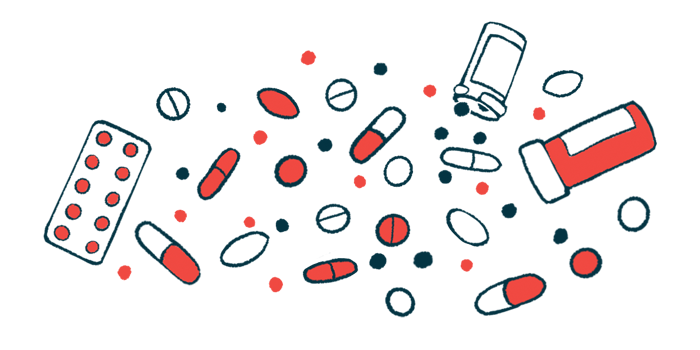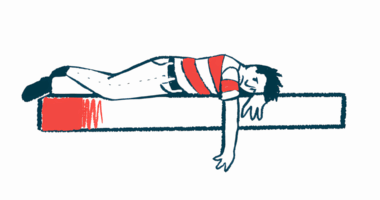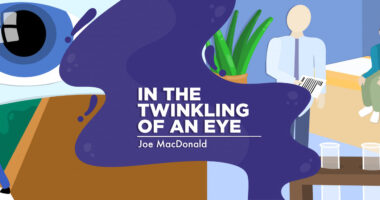Hemophilia linked to greater use of medications for pain, mental health
Heavier use was not associated with level of factor replacement therapies

Pain, depression, and anxiety medications are used more frequently by hemophilia patients than by the general population, according to an 11-year study across Nordic countries.
However, the use of these medications in people with hemophilia was not found to be associated with their use of factor replacement therapies.
These findings highlight the need “for improved bleed protection and hemophilia care for all severities including mild hemophilia,” researchers wrote.
The study, “High use of pain, depression and anxiety drugs in hemophilia: >3000 people with hemophilia in an 11-year Nordic register study,” was published in the journal Research and Practice in Thrombosis and Haemostasis.
Study examined prescription patterns for medicines
Acute bleeding and permanent joint damage — a condition known as hemophilic arthropathy — are both associated with pain in people with hemophilia.
While depression and anxiety are often experienced by hemophilia patients, their true prevalence remains largely unstudied.
Here, researchers reported data from an observational study called MIND (NCT03276130) that was designed to identify prescription patterns for medicines used to ease pain, anxiety, and depression in people living with hemophilia. The study was conducted in four Nordic countries.
MIND was divided in two parts. Part A aimed to identify treatment patterns of prescribed pain, anti-depressant, and anti-anxiety medications in hemophilia patients compared with matched controls from the general population. Part B focused on analyzing cross-sectional survey data on the perspectives of hemophilia patients, caregivers, and hemophilia treaters.
The team, led by researchers at The Swedish Institute for Health Economics, described data obtained from part A, which was collected from 2007 to 2017.
In total, 3,246 hemophilia patients — 886 from Denmark, 288 from Finland, 522 from Norway, and 1,550 from Sweden — were included. A total of 14,098 individuals from the general population of Denmark, Finland, and Sweden, matched for sex and age, were also included as controls.
The increased use of these drugs is a sign of possible insufficient treatment and follow-up of hemophilia, irrespective of sex and hemophilia severity.
More medications prescribed to hemophilia patients
Hemophilia patients were divided in three groups. The first group comprised both women or men with moderate-to-high use of factor replacement therapies — defined as those with filled prescriptions to receive at least 40 international units per kilogram (IU/kg) per week of FVIII products, or at least 10 IU/kg/week of FIX products.
The second group included men with no filled prescriptions or with low use of factor replacement therapies (below the previously defined criteria for FVIII and FIX products). Finally, the third group comprised women, including hemophilia carriers, with low or no use of replacement therapies.
Analyses showed the likelihood of being prescribed medications for pain, depression, and anxiety was higher for hemophilia patients than for age-matched controls.
This increased use of medications was more pronounced in the moderate-to-high factor consumption group, and was also seen in men in the low factor consumption group and women, including carriers.
Compared with controls, the risk of opioid use — medications used as pain relievers — was four- to six-times higher in patients with moderate-to-high use of factor replacement therapies. The risk was lower, but still two- to four-times higher than controls, in the low consumption group.
Women with hemophilia, including carriers, had a two- to eight-times higher risk of using opioids compared with controls.
Long-term opioid use (over six months) was more frequent in hemophilia patients with moderate-to-high use of factor replacement therapies than in controls in both Finland (29% vs. 9% of person-years) and Sweden (27% vs. 9% of person-years). Of note, person-years is a composite measure that reflects both the number of people and the amount of time each person was followed; for example, 100 person-years refers to data collected from 100 people followed over the course of one year.
Opioid use increased with age
Additionally, the researchers observed that opioid use increased with age in both hemophilia patients and controls, but to a higher degree in patients.
Across all three subgroups, patients 30 years and older from Denmark had a higher risk of opioid use. This was also seen for patients in the moderate-to-high consumption group in Finland.
The use of non-opioid medicines was also consistently higher across all hemophilia subgroups, ranging from 1.40- to 5.64-times higher compared with controls.
The likelihood of using neuroleptics (antipsychotic medications), antiepileptics (used to manage anxiety), and antidepressants was higher — ranging from 1.3- to 2.87-times higher — across all patient subgroups, except for one in Sweden and two subgroups in Denmark.
The use of pain medications was linked to a higher risk (around 1.6-times higher) of using other medications to manage anxiety or depression. For women, including carriers, the use of pain medications was also linked to a heavier use of antidepressant and anti-anxiety medications (by around 26%).
Overall, these findings suggest that hemophilia patients “use more pain, depression, and anxiety drugs compared with population controls,” the researchers wrote.
This heavier use was not associated with sex or level of factor replacement therapies.
“The increased use of these drugs is a sign of possible insufficient treatment and follow-up of hemophilia, irrespective of sex and hemophilia severity, even [in] those with … milder hemophilia,” the researchers wrote.








